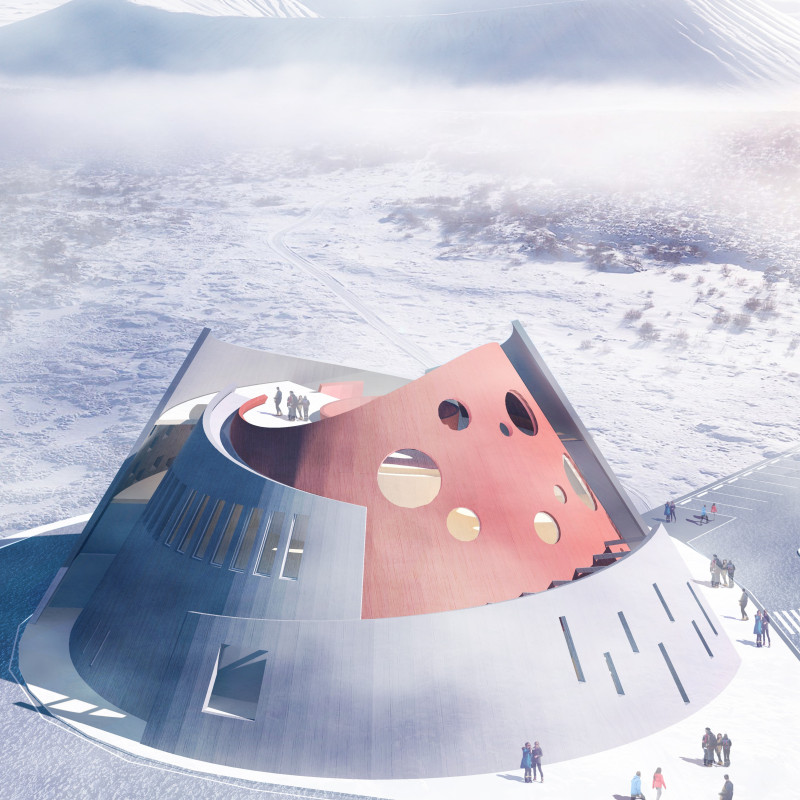5 key facts about this project
The Crater of Light is located in the vast wilderness of Iceland, designed to connect closely with its volcanic setting. It functions as a museum dedicated to the nearby Hverfjall volcano. Instead of presenting a traditional architectural form, the design seeks to create an experience that reflects and celebrates the surrounding landscape, offering visitors a unique opportunity to engage with nature.
Spatial Organization
The structure consists of three distinct levels, each with its own function. The first floor includes a reception area, a café, and storage. These spaces provide essential services to visitors, ensuring a welcoming environment from the outset. The second floor features the main exhibition space, designed to showcase artworks and educational materials effectively. Finally, the third floor houses office spaces oriented to maximize natural light, creating a bright atmosphere for the staff.
Lighting Dynamics
Light plays a crucial role in the design. Given that daylight is limited during the winter months in Iceland, the building incorporates large windows to bring natural light indoors. A prominent glass curtain wall on the second floor offers breathtaking views of Hverfjall, allowing visitors to feel connected to the landscape outside. This feature does more than just illuminate the space; it acts as a living frame for the mountain, blurring the lines between indoor and outdoor experiences.
Structural Elements
Structural "fins" line the pathway leading to the roof. These elements not only serve an important function but also add to the overall aesthetic of the building. They protect the structure from harsh weather while creating a visual connection to the geological forms surrounding it. The fins create a sense of separation from the landscape while simultaneously inviting visitors to engage with its beauty.
A central shaft in the museum functions as a drainage and air vent, reminiscent of lava tunnels found in the region. This aspect of the design links the built environment with the geological features that characterize Iceland. The result is a museum that not only showcases cultural significance but also draws visitors into a deeper appreciation of the natural world around them.






















































